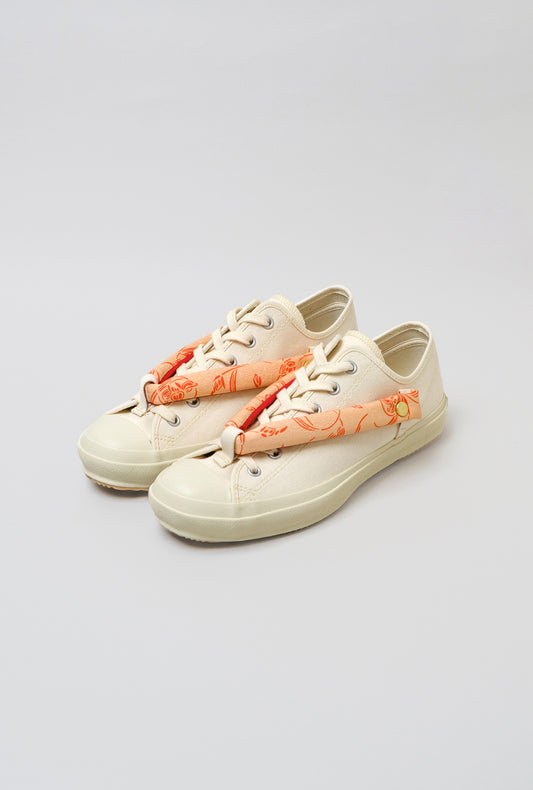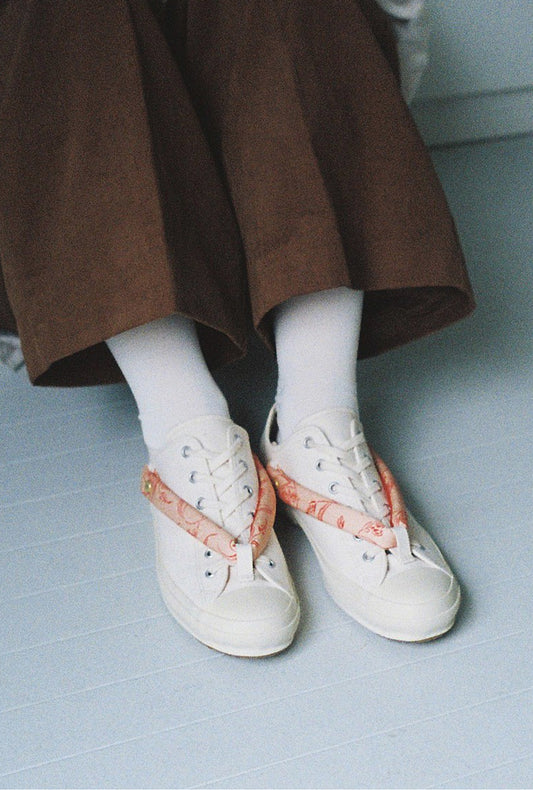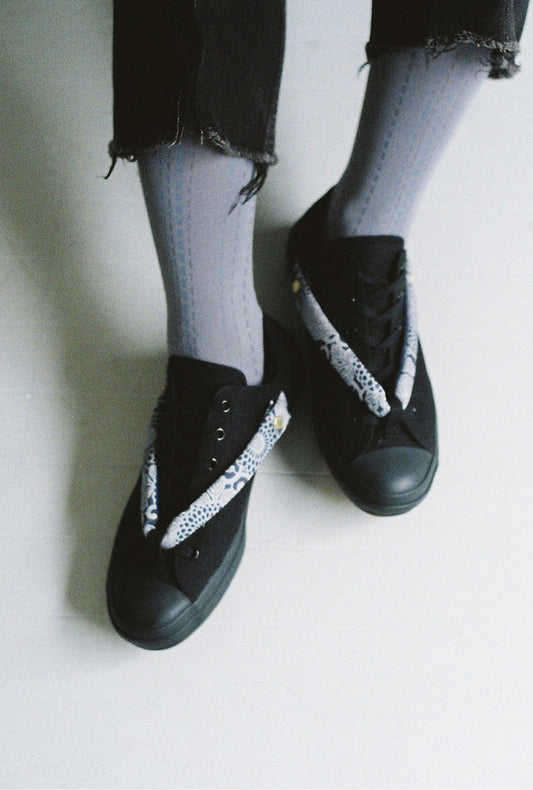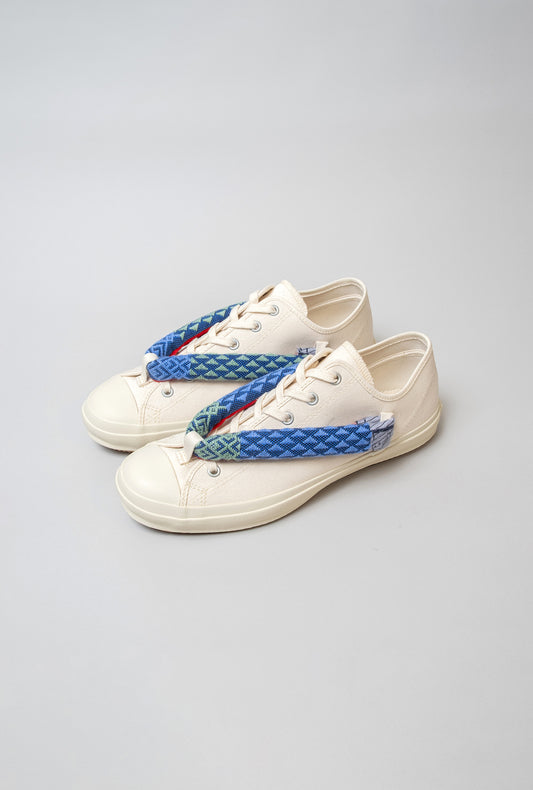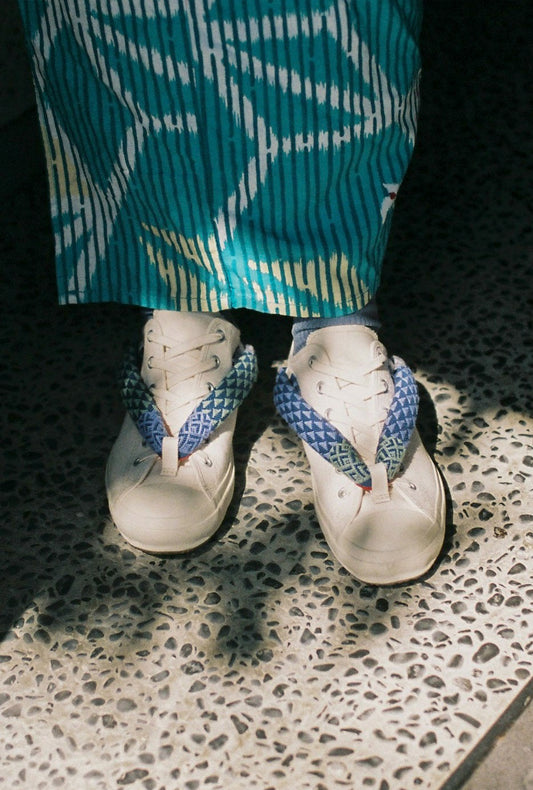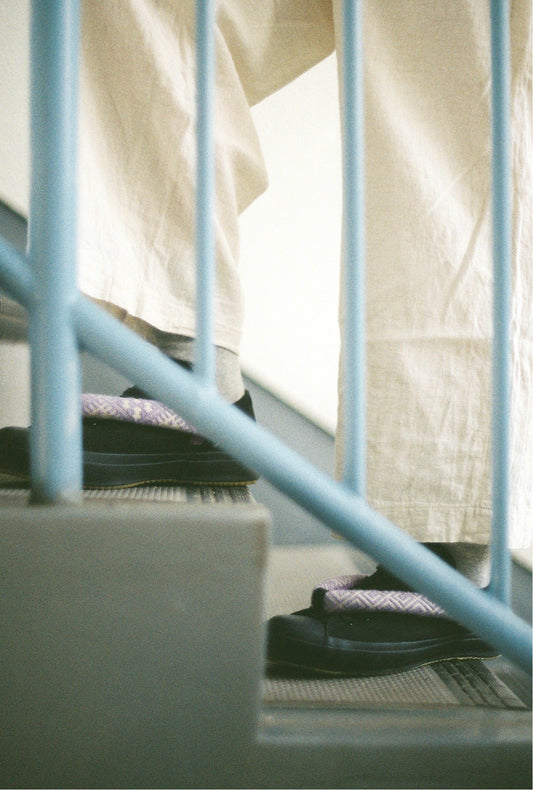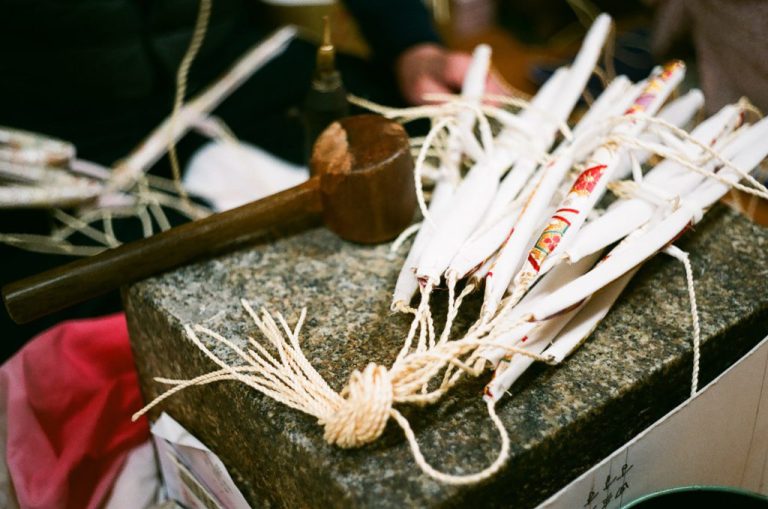
Kawaguchi Shoten | Hanao | 02
Share
#02 We are craftsmen, we make things out of our craftsmanship.
In Kyoto, there are zori (Japanese sandal) craftsmen, but there are no Hanao craftsmen. In the past, materials made in other prefectures were purchased to be presented to the imperial family at the Kyoto Imperial Palace, and Kyoto tailors were responsible for the final process.
Kawaguchi Shoten, established 60 years ago in Nishinari-ku, Osaka, is an craftsman affiliated with "Kikunokonomi," a long-established sandal maker in Osaka. At Kawaguchi Shoten, the entire process is done by hand. Women do the detailed work with needles, and men do the work of smoothing the Hanao with a hammer. Because of the many processes involved, Hanao work has traditionally been done by a husband and wife team. The Hanao has been made by a division of labor for three generations, and when the first generation became ill, it was the support of the entire family that kept the Hanao going. He told us about his attitude towards the craft and the charm of Hanao that changes with age.

──What kind of workflow do you have with "Kikunokonomi"?
I think Kikunoyoshi is the best in Osaka. My company has always been a make-to-order company, and we work with a wholesaler. We don't make and sell our own products. Wholesalers bring in all kinds of fabrics. For example, fabrics for clothes, obi, vinyl, and even Elephant skin, shark skin, stingray skin, worm skin, just to name a few. They bring all sorts of things. What surprised me the most was an animal called a puma, and they brought its entire pelt. She brings up something unimaginable in a regular hanao. She would say, "Can you do this? How about this?" “Kikunokonomi” is the one who has the most unusual and good things.
Recently, we often receive orders to make Hanao from clothing fabric. Even fabric with beads on it can be made into Hanao. Some people look at the fabric and say, "Can you make a Hanao out of this? But we are craftsmen, so we make it into a shape. Depending on the item, we cut and process different parts of the fabric (adding a lining). Each part of the Hanao has its own specialist, and many hands are involved in each step of the process. Honten (the lining of the Hanao) is made in Nagahama. There is only one shop in Tochigi Prefecture in Japan that makes hotohimo. It is knitted by hand. The paper used in the Hanao is also available at specialty stores, but as demand has declined rapidly, more and more stores are closing their doors, so we have to stock up.
──I once heard a zori craftsman say, "There have been no craftsmen making Hanao in Kyoto for a long time.
There are none. Hanao is a division of labor. Most are made in Tokyo and Osaka. The largest number is in Hanakawado, near Asakusa in Tokyo. Hanao fabrics also come from Kyoto. Nishijin, for example. Kyoto has not made footwear for a long time. Kyoto has always been at the forefront of the kimono industry, with Nishijin at the top of the list. Nowadays most of them are sold together with obi and other accessories, but in the past everything was sold separately (kimono, obi and obi clasp). Most zori are sold in Osaka. Kyoto is a city of craftsmen who "finish" the work because the Imperial Palace was located there. Zori is a division of labor, whether for the stand or the Hanao.

──I also heard that in the old days people were given kimonos as wedding gifts.
Yes, yes. In the old days, a bride was given a kimono for each season, like this one for spring and this one for winter. Kyoto is said to have the most kimonos. Kanazawa is next. If Kyoto has 10 kimonos, Kanazawa has 8. Kanazawa has a unique yuzen style. Aizome (indigo dyeing) is strong in Shikoku. It is good for health and prevents insects. Kimonos are interesting because they have regional characteristics.
──In the past, most people wore kimonos on a daily basis, but nowadays people wear kimonos less and less.
Well, kimonos are expensive, you know. But nowadays there are many people who wear kimonos for coming of age ceremonies. Even men wear haori and hakama. I guess they rent them, but it is nice to see young people wearing them. Kimonos used to be sewn by hand, but gradually they are being sewn with a sewing machine. Most yukata are also sewn by machine. When you rent a kimono, you also rent geta and zori. Rented geta and zori are discarded after being worn a few times. They are renewed and updated according to the season. "Things" always come with money. Young people do not know how to use them. If people don't use them, the number of materials and people who make them will decrease and they will disappear. It is a vicious circle.

──What is the attraction of Hanao to you?
I think of it as a job that I do for a living. Like any craftsman, there is no retirement age for this job. Although there are deadlines, I can enjoy my work and have a relaxed lifestyle.
──Craftsmen work 24 hours a day, don't they?
That's not true! If you work 24 hours a day, you destroy your body!
──In your MIND, I mean!
I get it! Even when you finish today's work, you have to keep in mind the arrangements for tomorrow's work. Tomorrow, a week from now, a month from now. The beauty of handwork is that we can do that. We use our brains and we make things with our hands. It has a way of life. I think that is our strength. Crafting is a way to keep your hands busy. I got sick once. I can't guarantee that. A lot of things happen in the world.
──What is important to you on a daily basis
To accumulate. When you are young, you want to have fun in your free time. I forget what I have to do in my spare time. In your spare time you should do the work you have accumulated and the work you don't want to do. Accumulate them and do them efficiently. Don't miss important work when you're busy. I think the weavers in Kyoto are like that. They have their work in mind all year round, like color schemes and so on. We are all like that.
(End)

